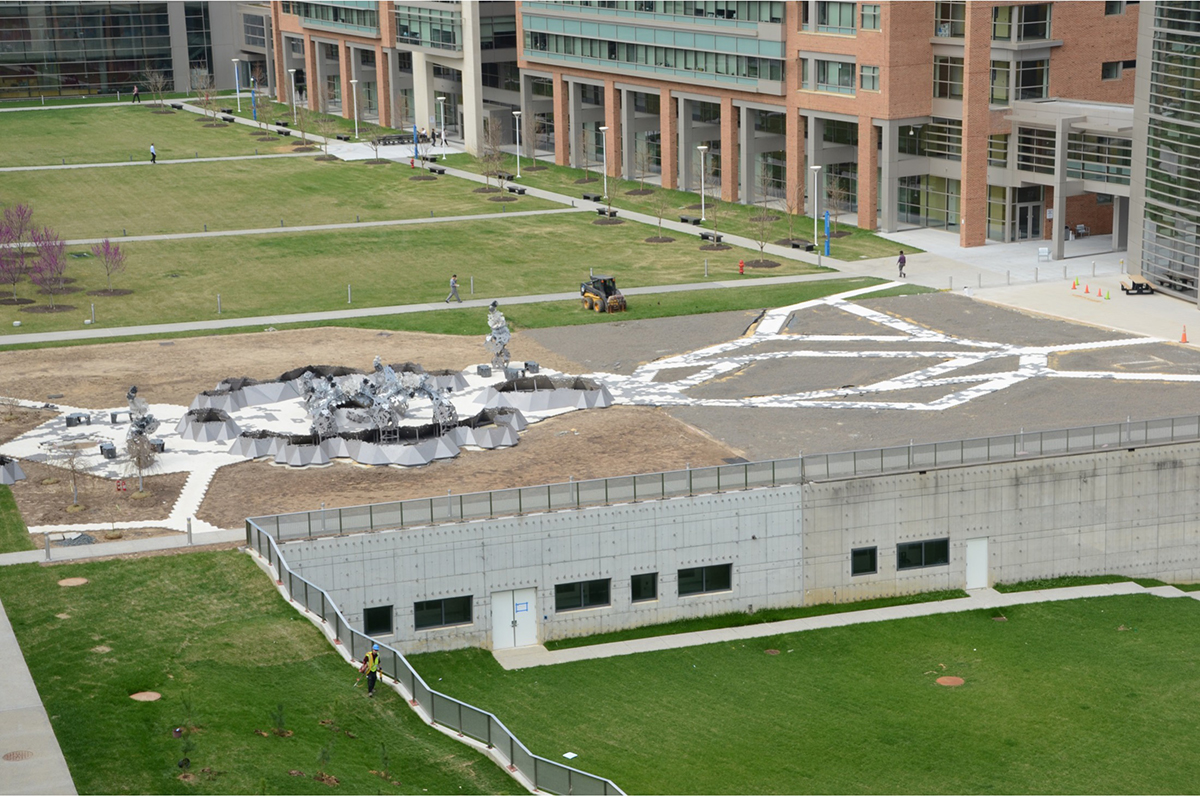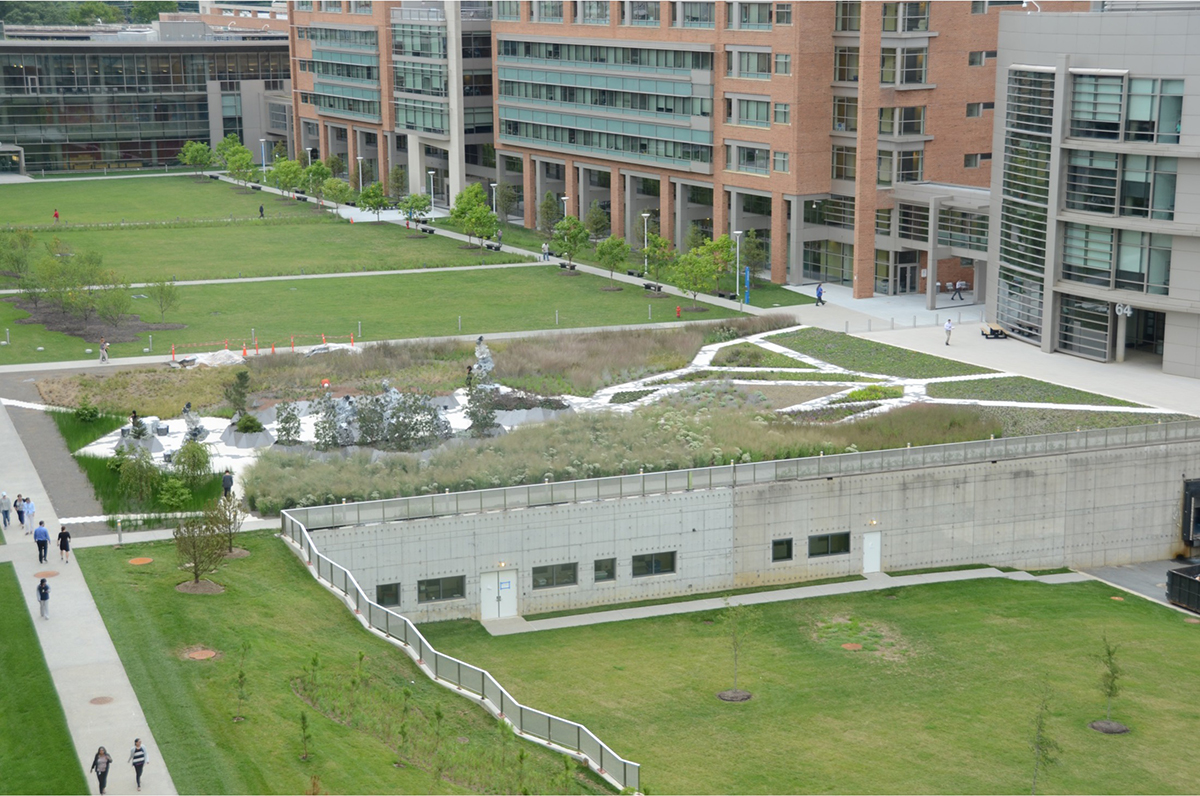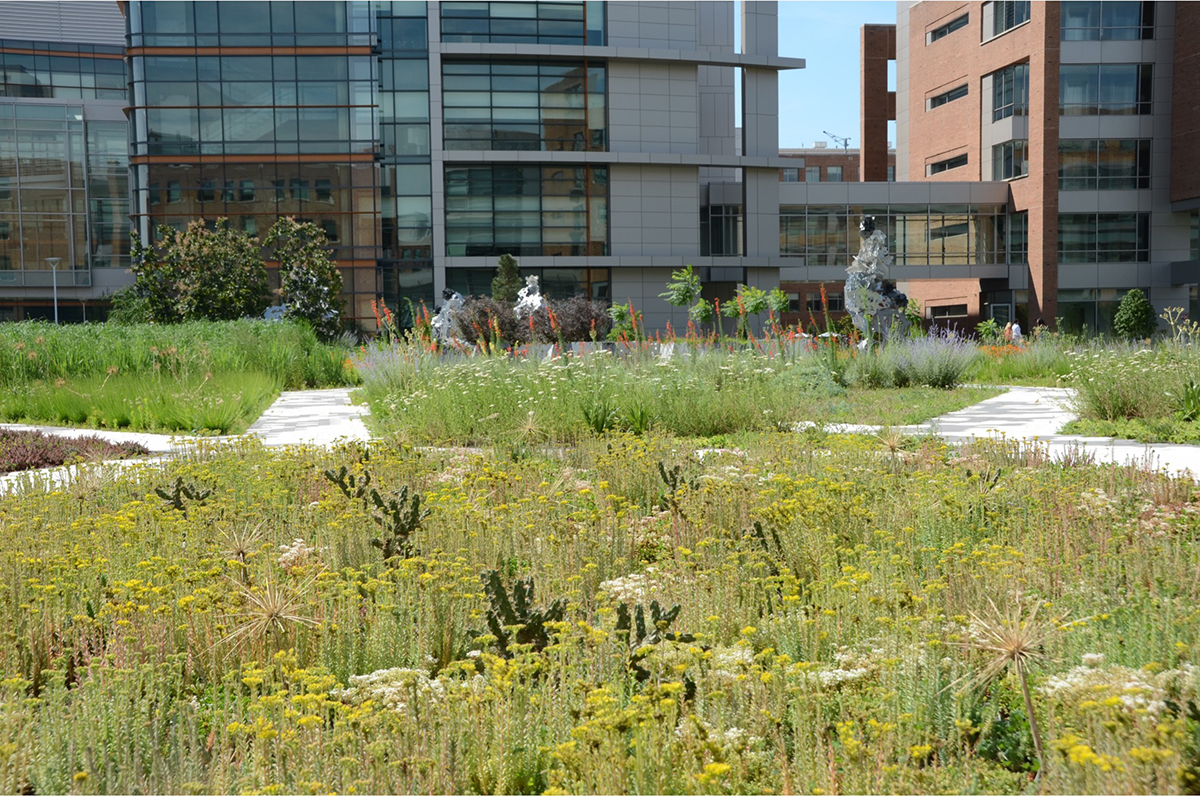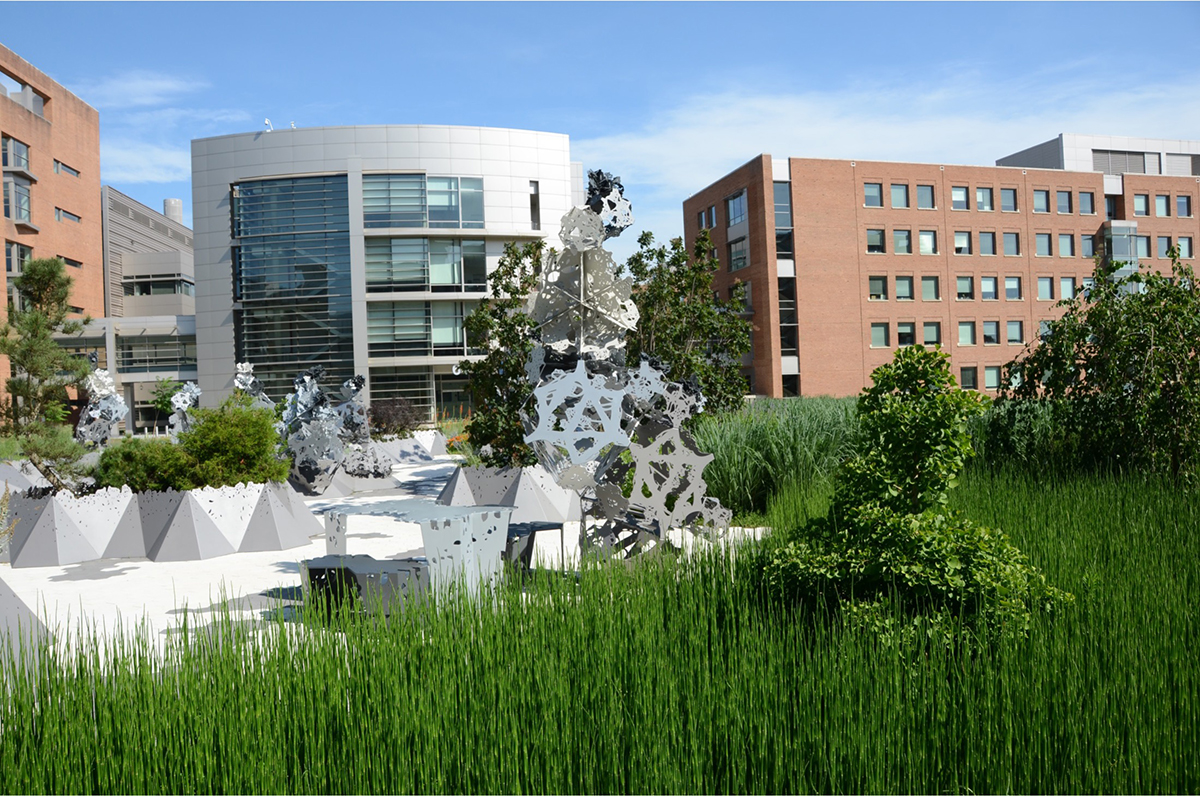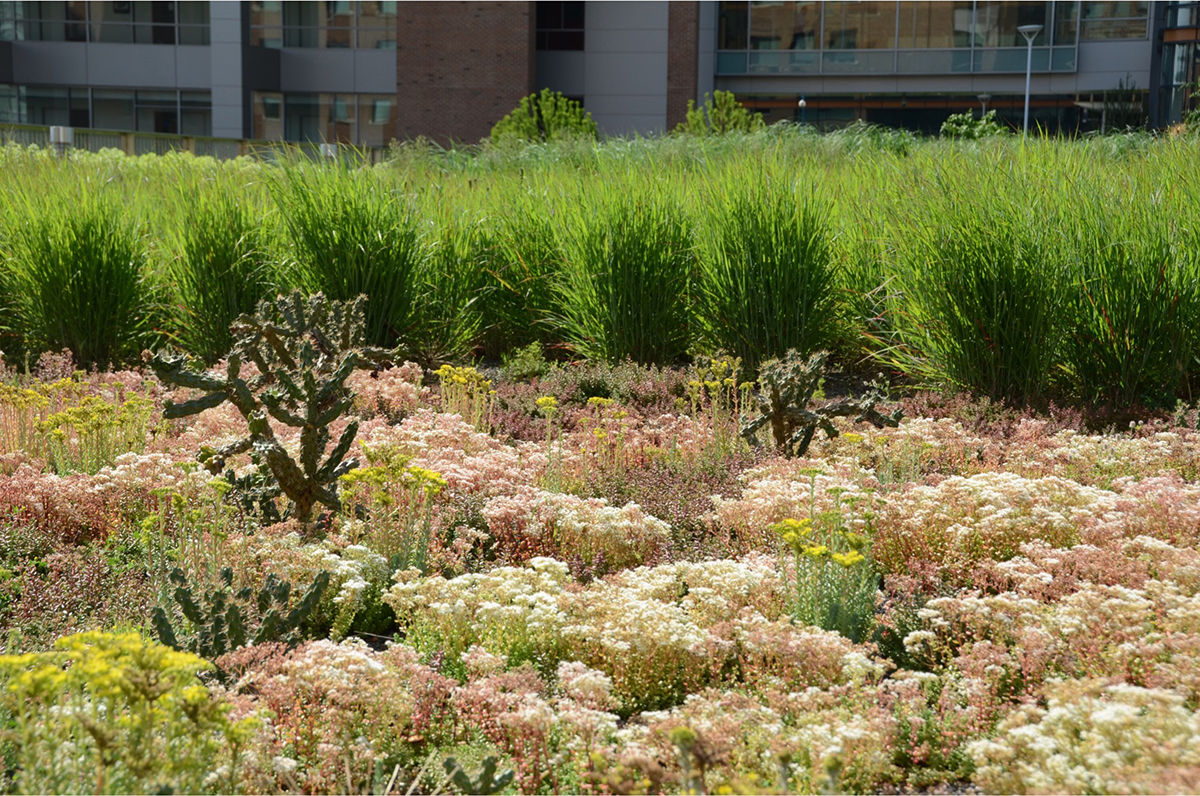Underpinning such an ambitious approach to functionality and species diversity is a long-established specialist green roof plant producer, Emory Knoll Farms, and a long-term relationship between the grower and its client.
Emory Knoll Farms was the first plant grower in the United States to specialise in the green roof market, supplying green roofs since 1998. Unlike other providers who supply modules featuring already established plants, Emory Knoll Farms supplies plug plants.
“When we started producing green roof plants,” recalls Ed Snodgrass, Emory Knoll Farms Owner and President, “we had projects everywhere. People wanted single species; it was a pretty simple, but incredibly high-risk approach. It took a lot of educating to steer our clients away from that mindset. Now, we choose who we work with. We gave up on certain types of clients and focus on like-minded contractors, that sell installation AND maintenance as one package.
“We grow and supply plugs, Snodgrass explains, we seek to capitalise on plant juvenility and on choosing the right plant for the right site to achieve good outcomes.
“Our plants are mostly sold in US states that have evenly distributed rainfall. That goes from Georgia up through Maine, across the Great Lakes, and down through Missouri. We also have some customers in Hawaii and the Pacific Northwest. If you work, as we do, on green roof projects without irrigation, you must have the rainfall spread out through the year.
“We have identified a palette of perennial plants that are drought tolerant and will do well in the type of growing media found on green roofs. The plant palette we offer is designed to broaden the genetic pool used while allowing for succession (i.e. some will act as pioneers) as a strategy to secure good establishment, enhance overall plan resilience, and many greater benefits. Our selection includes sedums, natives, nectar-providing perennials, grasses, plus accent plants that enhance visual quality.”
Emory Knoll Farms’ focus on species and genetic diversity is one of the draws DeStefano highlights when describing his plant supplier: “Ed has a much greater diversity in the plant palette he offers than most of his competitors…with him, projects can be totally tailored. Ed and I never do something “normal”. Every project is an experiment. There’s a very tight relationship between production and design.”
Emory Knoll Farms is set up to conduct plant trials. “Our 131-acre farm includes 10 green roofs used for testing green roof plants, soil mixes, stormwater management and biodiversity,” explains Snodgrass.
“We have designed our own propagation media – making it very similar to what is used as growing media on green roofs to avoid creating a physical or chemical barrier. It is very freely draining (38% air filled porosity). We use coconut coir, rice hulls and pine bark to create an aggregate, and we add to this some fines, made of spent mushroom compost, which is very consistent in composition. So, our growing media is entirely made of recycled products.
“The plugs we sell are 3.5 inches (9cm) deep – this is deeper than standard plug plants, to ensure the root grow down to the level where water can be found in a green roof.”
Beyond plant growing technical expertise, This Garden at this Hour’s horticultural prowess also relies on a shared understanding of what a green roof is and how emulating natural succession processes can be a very effective strategy to achieve success.
“Green roofs are a subset of landscape architecture that is much more closely related to construction, highlights DeStefano. There is no biology of life to preserve when you work on a green roof project. You are purely working with built layers.
“This doesn’t mean that natural systems don’t play a role. But perhaps more that it isn’t a logic of traditional conservation that prevails. In terms of design approach: wherever possible, I have increasingly worked with a randomised approach. This works out best in terms of installation. It also allows to maximise chance of establishment, while keeping maintenance requirements at a minimum. We allow seed migration to take place rather than try to retain an original design.
There are strong advantages in emulating natural processes to achieve the successful establishment of a diverse, and therefore multifunctional plant palette on a green roof, explains Ed Snodgrass: “Colleen Butler and Colin Orians of Tufts University have shown that establishing a succulent ground cover, as a pioneer, provides better chances to then establish a wider diversity of plants successfully – because it helps keep the temperature of the growing media down, while also maintaining soil moisture. Additionally, if you don’t get good groundcover in the first few years, the nitrogen becomes loose and goes out in the atmosphere – it is important to get plant establishment right. So, Butler and Orians look at green roofs as a disturbance and established an approach to planting which mimics what would happen in nature in similar circumstances: nature always starts with pioneers!”
A greater use of native plants is often proposed as a key objective in efforts to help support wildlife in cities and increase the functionality of green roofs. This Garden at this Hour does include a rich selection of natives, but both Snodgrass and DeStefano warn that, in this field, things are more complex than they seem.
“The use of natives is a prickly topic, explains DeStefano: native to where? In Washington DC, the native landscape would be solid woodland, with abundant wet ecosystems around the Chesapeake Bay. If you go wider, then you look at the mid-Atlantic region, but where do you stop? What is clear though, is that if you extend your catchment even more to include the Midwest, then you have a lot more species that thrive in North American dry steppes which do very well on green roofs.”
Ed further explains: “If someone says they want natives, I ask: why do you want natives, what do you want from them? You have to get an understanding of the value(s) or function(s) people are after. They might reply: I want natives for pollinators. I want natives for bird food. I want natives for micro-invertebrates. I want natives for butterfly habitat. Then, you need to select the plants that suit that group of animals you are trying to attract. You must then understand at what scale you need to create habitat, and how you keep it. For example, with butterflies, if you only include nectar plants, you’ll attract adults and they’ll lay eggs, but there’s no larval food. The eggs hatch out and the larva will starve to death on top of the building. Larval foods are typically ugly plants and nectar plants are better looking. Everybody plants their butterfly gardens for nectar and not for larval food. Doing well in this field gets down to very specific choices.”
“And what if the best plant to do what you are after comes from the other side of the watershed?” challenges Snodgrass. “Take Talinum teretifolium. It is native to North America, and its natural range centres around Pennsylvania. Compare it to Talinum calycinum, also native to North America, but with traditional range centred on the Great Plains. The latter has a similar flower to the former, but bigger, with much greater amounts of nectar. For a bee, it’s like comparing a snack to a full meal.
“Now, if you’re looking for an ecosystem service such as stormwater management, you want plants that can absorb water after a drought very rapidly. You want plants that slough root systems and regrow them. If you’re looking for cooling, you want plants with a high evapotranspiration rate. You need to look at the desired function and organise the plants according to that function.”
Green roof researcher Professor Bruce Dvorak echoes this practitioners’ perspective: the quality and depth of the substrate is primordial, and the concept of ‘native’ must be refined: “When working with ‘natives’ the concept of ‘natural analogues’ is very important – i.e. choosing the plants that will suit the environment (especially substrate depth) found on the roof. The key to success is to use plants from the ecoregion as well as from habitat analogues.”
While ecoregions are relatively well mapped around the world, plant knowledge in relation to natural analogues to conditions found on different types of green roofs is limited. “While native plants on green roofs do work, we lack the research to show what they need and which native might be best suitable,” says Dvorak. Snodgrass agrees: “In the US, some regional research centres are needed that would identify the suitable plant communities to use on local green roofs – to ensure a good resilience of the planting, while also maximising benefits.”
















